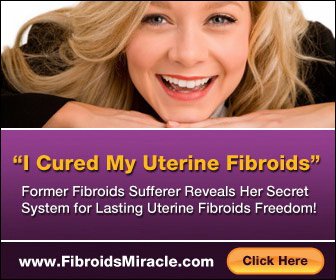Any woman of childbearing age can experience uterine growths or fibroids called Leiomyomas or Myomas. These growths are generally benign, which means they aren’t cancerous and don’t usually lead to cancer.
The cause of Leiomyoma is not clear, but two of the major factors that influence the growth of myomas are heredity and hormones. Though heredity is somewhat already given and cannot be changed, hormones have a more complex role in both the growth and degeneration of myomas.
The following FAQs will provide answers to some questions surrounding the role of hormones in the issue of Leiomayomas.
What are Leiomyomas?
Leiomyomas are more commonly called as Uterine Fibroids. These are benign tumors that are usually made up of muscle tissues or fibers that clump together and grow into lumps.
Uterine fibroids can grow anywhere along or near the uterine wall. They can grow up to several inches and multiple fibroids might also grow at the same time. Some fibroids grow so big that they add to the weight and cause compression in the abdomen.
What Causes Uterine Fibroids to Grow?
Fibroids commonly occur in women between the ages of 30 and 50, when their estrogen and progesterone hormone levels are still high. Fibroids are noted to shrink at the onset of menopause, which usually occurs at the age of 50 and above. This highly indicates the role of hormones in the development of fibroids.
Aside from age, there are other factors that are attributed to the risk of fibroid growth:
Family history –
Those who have family members or relatives with fibroids are at a higher risk of having fibroids too.
Ethnicity –
Women of African ethnicity are more prone to developing fibroids compared to women of another ethnicity.
Weight –
Those who are overweight or obese are two times more likely to develop fibroids than those who maintain normal weight.
Diet –
Women who consume more meat can increase the risk of growing fibroids compared to those who consume more vegetables.
These are only risk factors that have been noticed to contribute to the occurrence of fibroids in women. However, the exact cause of fibroids is yet unknown so any woman might experience leiomyomas with or without the risk factors.
What Hormone Makes Fibroids Grow Fast or Slow?
As mentioned before, estrogen and progesterone levels are noted to have influence in the growth of fibroids. Even testosterone levels can affect fibroids slightly.
During pregnancy, when both estrogen and progesterone hormones are abundant, fibroids have been noted to grow a lot faster and bigger. And during menopause, when estrogen and progesterone levels start to decrease, fibroids also decrease in size.
Based on these observations, anti-hormones are sometimes prescribed in the treatment of uterine fibroids. And the fibroids, upon treatment, somehow do shrink as the hormone levels are constrained.
Can I Take Hormonal Treatment for Leiomyomas?
Although it might sound sensible to try hormonal treatment for fibroids, not all women are recommended to undergo such. Also, no hormonal regimen is proven to eliminate fibroids without help from other treatment procedures.
Hormonal treatments are commonly used to help “manage” the symptoms of fibroids rather than treat them. Low-dose birth control pills help control bleeding and regulate the menstrual cycle. The same is applicable for Progestin-releasing IUDs (intrauterine devices).
The use of Gonadotropin-releasing hormone (GnRH) agonists is another form of hormonal treatment for fibroids. These drugs do help shrink the fibroids, but is used mostly as a pre-operative treatment to help lessen the risk of bleeding. Also, it may only be taken for less than 6 months because it causes the bones to thin. The downside is, if after 6 months of treatment the fibroids don’t go away, they will grow back again and cause the same symptoms.
The use of anti-hormonal drugs can deliver better results compared to hormonal treatment. It is a relatively new treatment method, but has been seen to help resolve the symptoms and shrink the fibroids more effectively.


